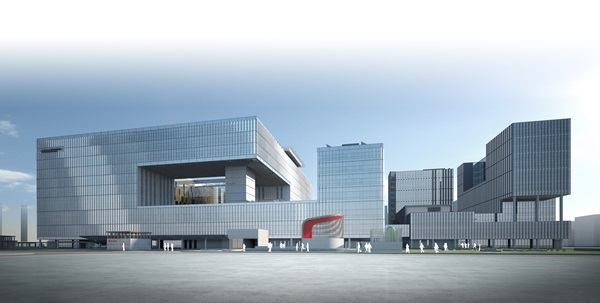Ewha Womans University Seoul Hospital, which seeks to expand the size of hospital wards by opening a new building in February 2019, has unveiled details for ward operation at a news conference.
The 1,014-bed hospital broke ground to build the new building in January 2015 with the aim of expanding space per bed to 10 square meters or more, to create a comfortable ward environment and attain the infection control system of high levels. Its rate of progress has reached 34.6 percent.
Ewha Seoul Hospital’s new operational plan will likely gain additional momentum, since the government announced it would give insurance benefits to three-bed, two-bed and single-bed rooms from 2013-2019 on a phased basis, as part of its policy to expand insurance coverage for healthcare services.

Currently, Ewha Seoul Hospital’s 1,014 beds break down into 606 three-bed rooms, 72 two-bed rooms, 60 five- to 10-bed rooms, 129 single-bed rooms, 51 VIP and VVIP rooms, and a 96-bed intensive care unit.
The per bed space of three-bed rooms is 10.29 square meters, larger than the legally stipulated space of 6.5 square meters for a single-bed room, and includes a toilet and a washroom.
And the per bed areas of two-bed rooms and single-bed rooms have been set at 15.43 square meters and 20.72 square meters, respectively, to strengthen the prevention of infectious diseases and the protection of privacy.
The hospital will gradually expand the new operation to 494 beds in February 2019 and to all rooms in 2021.
Also, it will set up a pulmonology ward with a separate duct system to control infectious diseases as well as an international-level negative pressure isolation rooms in an emergency center.
The hospital will focus on five most common cancers, cardiovascular- cerebrovascular diseases, and organ transplant while enhancing joint research with industry, academy, and research institutes for future diseases and operating a high tech international treatment center and a premium healthcare center to emerge as a world-class institution.
As the hospital is situated close to the special zone for medical tourism, it is expected to serve as an international medical hub to connect Korean medical industry to foreign partners.
“Fund management is going well, and the operation of new rooms will begin earlier than planned,” said Lee Ryung-ah이령아, chief of the hospital’s planning and management office.
The Ehwa Womans University Medical Center이화의료원 also made public its ambition to be reborn as hospital faithful to basics, for the successful opening of Ewha Womans University Seoul Hospital and the continuous growth of Ewha Womans University Mokdong Hospital이대목동병원.
“The base of medical services is treatments and treatments should be based on ability,” said Shim Bong-suk심봉석, director of the center. “We have taken the lead in innovative activities such as cancer surgery within a week of diagnosis for the first time in Korea, a one-stop service to treat and do a medical checkup on the day of visiting the hospital, and treatments and surgery on Saturdays, to become benchmarking target of others.”
“We will continue to lead the development of patient-oriented treatment system for fast and accurate diagnosis and the improvement of ward environment,” he said. “Putting priority on the patient-centered management, we will make efforts to protect public health.”
And the medical center plans to enhance integrated medical industry in the Fourth Industrial Revolution era and build infrastructure to accelerate the development and research of higher value-added sectors such as an ICT-based smart healthcare.
“In the future, the medical industry will not be able to add much more value with treatment-centered hospitals and specialization alone,” Shim said. “We will apply new technology to treatment system through clinical trials and new technology developed through researches as well.

